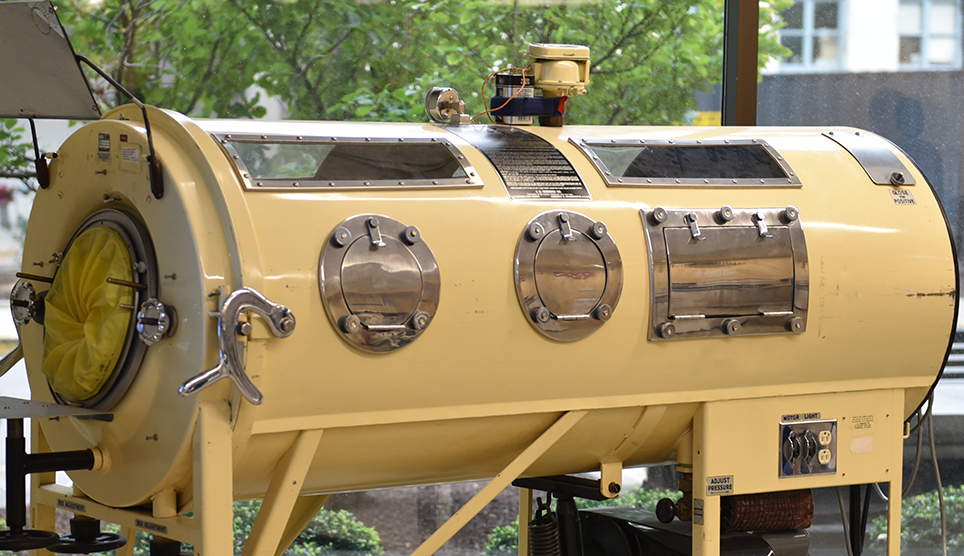In the past half century, artificial intelligence has moved from the obscure to the mainstream
SUSAN KARCZ
Current medical uses for technologies under the AI rubric include telemedicine, diagnostic assistance, and clinical training. Two items in the Warren Anatomical Museum’s collections, however, bear witness to the clinical assistive technologies that existed long before smartphones.
Every Breath You Take: Treatment
Before polio could be prevented, it had to be treated. HMS was on the scene for both.
In the early to mid-twentieth century, little was known about the poliovirus and treatments for the acute paralysis that resulted from infection by the virus ranged from ineffective to harmful. Finding ways to help patients survive, particularly patients whose ability to breathe was threatened by muscle paralysis, became a goal for many researchers and clinicians.
At HMS, faculty members Philip Drinker, an engineer, and Louis Agassiz Shaw, a physician and physiology instructor, researched artificial respiration and developed a new type of mechanical respirator, a variable-pressure device popularly known as the “iron lung.” As with many lasting innovations, their invention used a technological advance—the growing availability of reliable sources of electricity—to fill a critical need: An active worldwide polio epidemic was facing an urgent demand for lifesaving care.
This device represents an early example of biomedical engineering, long before the field as such was known. Drinker and Shaw, with others, tested a prototype of what came to be known as the Drinker iron lung at Children’s Hospital in 1928. The clinical trial with one subject, an 8-year-old girl being treated at Children’s, showed that the iron lung worked, although the child died several days later of pneumonia.

Warren Anatomical Museum, Francis A. Countway Library of Medicine
The mechanical respirator shown here was manufactured by the J.H. Emerson Company in Cambridge, Massachusetts, in 1931. This example of the Emerson model of the iron lung is still functional and was in use until the early 2000s. In 2018, it was acquired by the Warren Anatomical Museum at the Francis A. Countway Library of Medicine.
“The device offers opportunities for teaching, research, and public engagement,” says Dominic Hall, curator of the Warren Anatomical Museum. “It’s a tangible example of how technological innovation and invention can have a direct, positive effect on human health.”
The 1954 Nobel Prize in Physiology or Medicine was awarded to John F. Enders, PhD ’30, Thomas H. Weller, MD ’40, and Frederick C. Robbins, MD ’40, for their work in culturing the poliovirus, which laid the foundation for vaccine development, eventually leading to the near-eradication of polio and the obsolescence of the iron lung.
Rhythm and You: Diagnosis
This cardiovascular analogue trainer, designed by former HMS faculty member and engineer Reinier Beeuwkes, simulated heart rhythms in distress. Beeuwkes used the device as a diagnostic teaching tool in the classroom. It would be attached to an oscilloscope, and the instructor would alter the conditions of the simulated heart so students could observe the rhythm changes. The trainer was in use in the 1970s. Although its design was sold to the Harvard Apparatus Company, founded in 1901 by William T. Porter, an HMS associate professor of physiology, the device did not achieve commercial success.